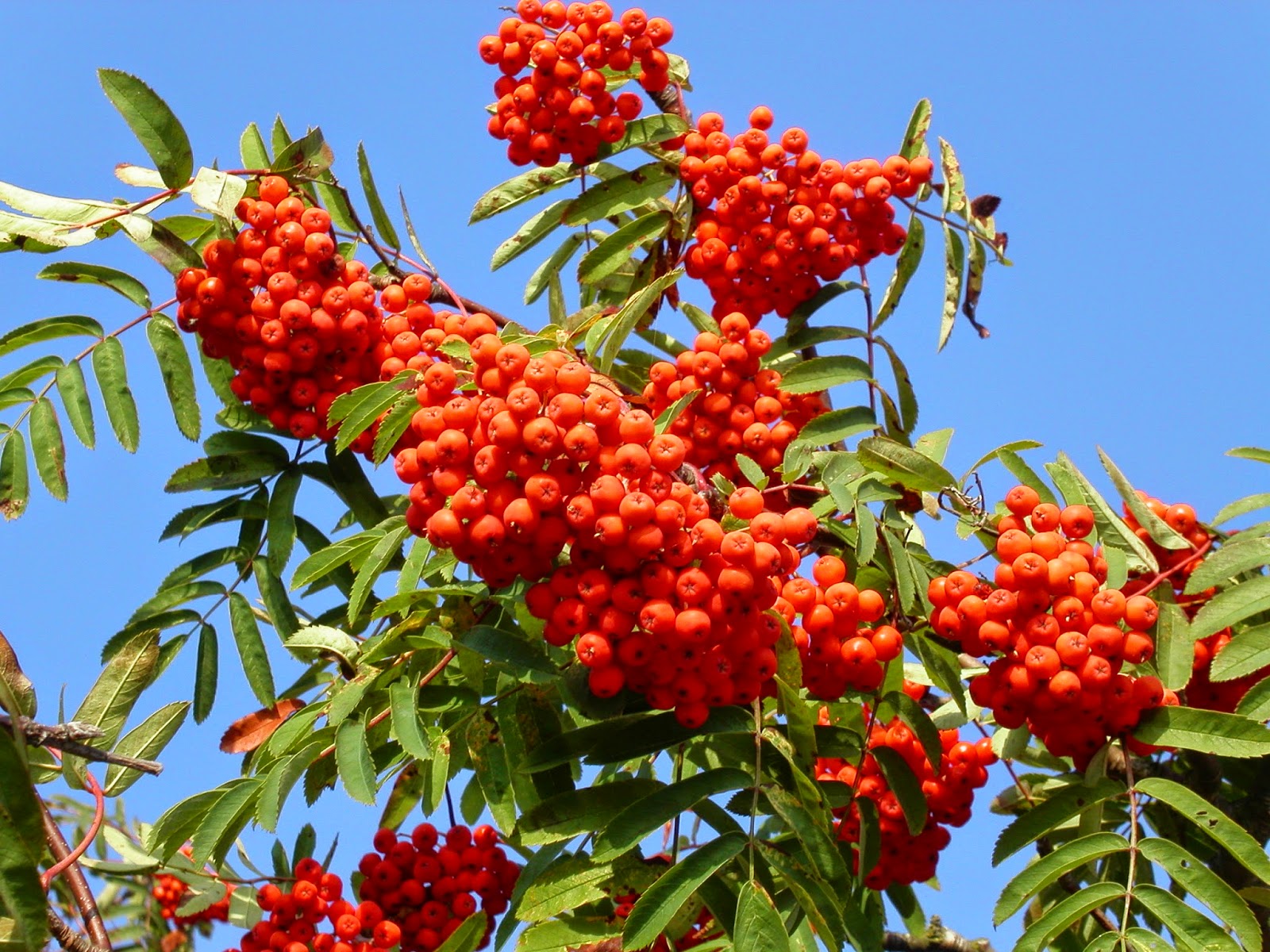 Though vulnerable to pests and
diseases in some areas, mountain ashes are still popular ornamental or shade
trees because of their size (most are under 50 feet), their repaid growth their
flat clusters of white flowers in spring and in particular their showy,
long-lasting red-orange berries, which the birds like as much as we do.
Mountain ash even has showy red orange foliage in fall. In short, it is worth trying,
though perhaps not a safe bet for mass plantings. There’re a number of garden
worthy mountain ashes, some of them native to the U.S European mountain ash, or
rowan tree (Sorbus aucuparia), is the most widely grown. However, it is hardy
to zone 3 and grows as tall as 45 feet, with rather fernlike leaves “Fastigiata”
is an upright variety, and “Xanthocarpa” has yellow berries, Korean mountain
ash (S. Alnifolia), hardy to at least Zone 5, can sometimes grow as tall as 60
feet and has a round ed head that can extend all the way to the ground, though
you might want to remove lower branches so as to view the smooth, gray bark of
the trunk. Both the berries and the autumn leaves are extremely showy, though
the foliage is not as finely cut as that of European mountain ash.
Though vulnerable to pests and
diseases in some areas, mountain ashes are still popular ornamental or shade
trees because of their size (most are under 50 feet), their repaid growth their
flat clusters of white flowers in spring and in particular their showy,
long-lasting red-orange berries, which the birds like as much as we do.
Mountain ash even has showy red orange foliage in fall. In short, it is worth trying,
though perhaps not a safe bet for mass plantings. There’re a number of garden
worthy mountain ashes, some of them native to the U.S European mountain ash, or
rowan tree (Sorbus aucuparia), is the most widely grown. However, it is hardy
to zone 3 and grows as tall as 45 feet, with rather fernlike leaves “Fastigiata”
is an upright variety, and “Xanthocarpa” has yellow berries, Korean mountain
ash (S. Alnifolia), hardy to at least Zone 5, can sometimes grow as tall as 60
feet and has a round ed head that can extend all the way to the ground, though
you might want to remove lower branches so as to view the smooth, gray bark of
the trunk. Both the berries and the autumn leaves are extremely showy, though
the foliage is not as finely cut as that of European mountain ash.
How to Grow Mountain Ash
 You can plant the trees balled
and-burlapped in full sun and a moist but well drained soil. Newly planted
trees benefit from staking. Fire blight may blacken the ends of branches, especially
in the south. Affected branches should be pruned out. Young trunks may need to
be protected from sun scald in the north. Borers may be found in the trunk near
the ground in some regions in the east and can be destroyed by probing their
burrows with a wire laborious, but a labor of love if you have a fine tree.
(Korean Mountain ash is somewhat resistant to borers). Older trees rarely need
pruning, but young ones can be pruned in winter or early spring to produce one
central leader and to remove crossed or vertical branches or ones with weak
crotches. You may prune multi trunked trees to a single trunk while they’re
young, if desired and remove lower branches to allow headroom.
You can plant the trees balled
and-burlapped in full sun and a moist but well drained soil. Newly planted
trees benefit from staking. Fire blight may blacken the ends of branches, especially
in the south. Affected branches should be pruned out. Young trunks may need to
be protected from sun scald in the north. Borers may be found in the trunk near
the ground in some regions in the east and can be destroyed by probing their
burrows with a wire laborious, but a labor of love if you have a fine tree.
(Korean Mountain ash is somewhat resistant to borers). Older trees rarely need
pruning, but young ones can be pruned in winter or early spring to produce one
central leader and to remove crossed or vertical branches or ones with weak
crotches. You may prune multi trunked trees to a single trunk while they’re
young, if desired and remove lower branches to allow headroom. 


No comments:
Post a Comment